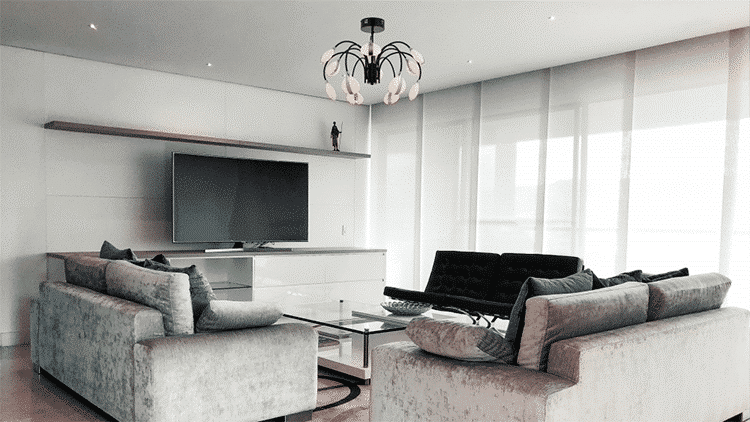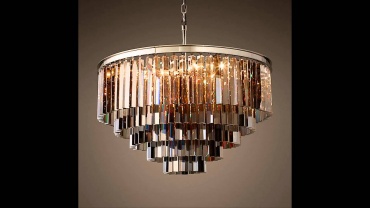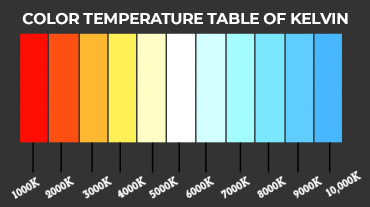As LED lighting started to be used more widely in our lives, incandescent and energy-saving fluorescent lamps began to be used much less frequently.
It is important that we are familiar with certain LED lighting terms so that we can choose the most suitable LED lighting today. LED light sources are used in almost all lighting. Today, more and more lighting fixtures are using integrated LEDs. These are LEDs that are permanently attached to the fixture, as opposed to removable LED bulbs. LED bulbs have been developed for the light bulbs used in our homes, and thus we have succeeded in converting the chandeliers, table lamps, sconces, and floor lamps we use into LED lighting.
What is LED?
An LED (Light Emitted Diode) is a two-sided semiconductor light source that emits light when an electric current is passed through it. Incandescent lamps convert a small part of the energy they use into light and a large part of it into unwanted heat. Only a small amount of the energy is converted into light, which therefore provides inefficient lighting. LEDs convert almost all of the energy they use into light. They do not emit as much heat as conventional lighting. They offer very efficient lighting and do not contain harmful gases like fluorescent lamps. There is no harm to the environment.
How long do LEDs last?
It is stated that the lifetime of most LED lamps will be between 25,000 and 50,000 hours. Considering that a typical incandescent lamp will have a lifespan of 1,000 hours, it becomes clear how long the lifespan of LEDs is.
The life of incandescent lamps ends with the breaking of the filament and the bulb does not light.
However, the completion of the life of LED lighting is not like incandescent lamps; the light given by LEDs gradually decreases over time.
LEDs are considered to be at the end of their life and should be replaced when they start to give off 70% of their initial light (with a 30% reduction).
What is an LED driver?
An LED driver is an electrical circuit used to power LEDs. The driver must provide enough current to light the LED, but limit the current to prevent damage to the LED.
LEDs work with low voltage and direct current electricity. The mains electricity in our homes is an alternating current and a high (230V) voltage. The main purpose of an LED driver is to convert this high voltage alternating current into the low-voltage direct current electricity that the LEDs are designed to operate on.
Maintenance of LED lightings
LEDs do not need maintenance after installation is complete. Every few months, traditional incandescent lamps require a bulb replacement. Due to the long life of LEDs, the need for frequent bulb replacement is eliminated. The ballasts needed by fluorescent lamps are not available in LED lighting. Ballasts do not require replacement or maintenance.

Environmental effects of LEDs
LED lights are the most environmentally friendly lighting solutions on the market today. They last longer than other lighting sources, so they do not need to be changed as often. These lights create less waste and use less energy. They protect the environment with their low energy consumption. LEDs do not contain mercury, meaning that when you dispose of them, mercury does not leak into the soil, water and environment.
What is the color temperature?

Color temperature (CCT) is a value that indicates the shade of white that LEDs will emit.The color temperature value is in Kelvin (K) and offers a value between 2700K and 6500K. The higher the Kelvin rating, the whiter the color will be.
For more information, you might want to check out our “What is a Kelvin Color Temperature” article.
What is the Color Rendering Index (CRI)?
CRI shows how accurately the light source can reproduce the colors of the objects illuminated by it. Today, we can change the colors of the objects in the photo by applying filters to the photos taken with a mobile phone. Light sources with low CRI also cause us to see the colors of the objects around us differently. There were no such problems with incandescent lamps. Therefore, the concept of CRI was not very popular before. However, LED and energy-saving lamps can show the colors of the things around us differently from the real ones (as seen under sunlight). For this reason, light sources with high CRI values should be preferred where color is important.
For more information, check out our “What is CRI” article..

What is Lumen?
It is the total amount of visible light emitted by the light source.
Lumen means brightness. The higher the lumen value of a lamp, the greater the amount of light it gives. The light levels of the lamps are measured according to the lumen values, not the Watt values. To get more light, you should choose bulbs with high lumens.
What is Watt?
A lamp’s wattage indicates the amount of electrical power it draws from the electrical grid to illuminate it. Many people think that the higher the wattage (W) of a bulb, the brighter the bulb will be. This is not true. Different types of bulbs can produce as much light as other bulbs while drawing less power from the grid (i.e. lower electricity bills). To understand which of the two lamps is brighter, you should look at the lumen values, not the watt values. The lamp with a larger lumen value will always glow brighter. Just as the length is measured in meters and the weight in kg, the brightness of the bulbs is measured in lumen values, not watts.
What is lighting efficiency?
It is how many lumens of light a light bulb gives per watt drawn from the mains. Efficient bulbs can give more light while drawing less energy from the grid.
While incandescent lamps consume 40 watts from the mains, they can give 400 lumens of light. On the other hand, LED bulbs can use 8W and give 800 lumens of light.
What is BIN and why is it important?
When producing LED chips, the lumen and color temperature of LEDs produced in the same series may be different. Using these products in the same project can be visually disturbing. In order to prevent this, the leds coming out of the production line are grouped according to their specifications and similar leds are taken into the same group. Since LEDs with the same BIN number have the same features, there are no visually disturbing light differences when used together.
What is dimming?
Adjusting the brightness levels of the light sources to the level desired by the customers is called “dimming.” Electronic devices that provide this are called “dimmers.”
Do dimmer switches save energy?
Yes, dimming LED lights allows you to consume less energy.
Are all LED lights dimmable?
Yes, all LEDs can be dimmed. However, drivers used with LEDs must have a dimming feature or there must be a dimmable device between the driver and the LED. Do not try to dim the bulbs that do not have the DIM feature, as LED bulbs are sold integrated with their own electronic components. You may damage the product. Dimming SMD or strip LEDs is quite easy. You can obtain LED dimmer devices from Avonni.
Resistance to external factors
LEDs are solid-state lights. In other words, semiconductor material is used instead of a filament or neon gas. An LED is a small chip covered in epoxy resin, making them much more durable than traditional incandescent bulbs and fluorescent tubes. Since there are no fragile components such as glass and filaments, LEDs can withstand shock, vibration, extreme temperatures.










